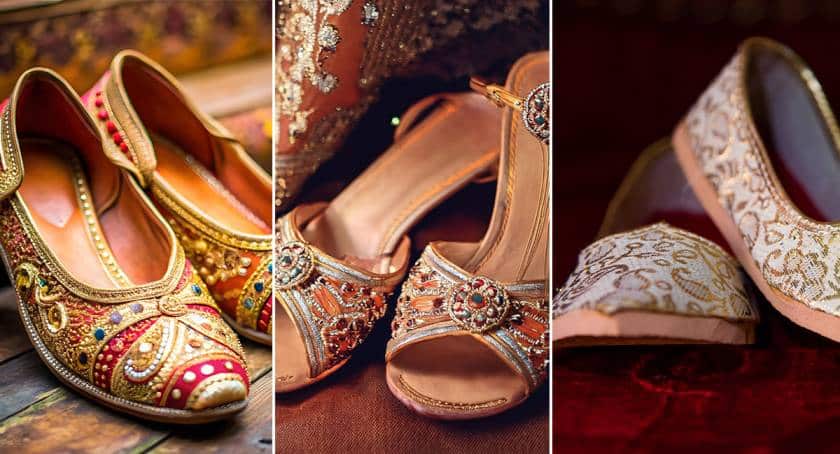Footwear Picks for Odia Traditional Wear
Odia traditional wear is a vibrant and elegant representation of Odisha’s rich cultural heritage. The proper footwear can enhance the entire look, be it the graceful Sambalpuri sarees, the intricate Bomkai designs, or the regal Pattachitra motifs. Choosing the perfect footwear for Odia traditional wear involves balancing tradition with modern aesthetics, ensuring comfort while maintaining cultural authenticity.
In Odisha, sarees play a crucial role in showcasing artistry and heritage. The intricate weaves of handloom sarees, such as Sambalpuri, Bomkai, and Pasapalli, demand footwear that complements their elegance while ensuring ease of movement. Additionally, Odisha’s rich history of temple architecture, dance forms like Odissi, and artistic traditions are reflected in its clothing, making footwear selection an integral part of styling.
This blog will guide you through the best footwear options for different Odia traditional outfits, helping you make the perfect fashion statement while honoring cultural roots.
Kolhapuri Chappals: The Classic Pair
Why Choose Kolhapuris?
Kolhapuri chappals, with their ethnic appeal, pair beautifully with traditional Odia sarees and handloom attire. These handcrafted leather sandals are a great option for cultural events and celebrations because they are comfortable and long-lasting. Their flat soles and sturdy design ensure ease of movement while complementing the graceful drape of Odia sarees.
Styling Tips:
- Opt for embroidered or beaded Kolhapuris for a touch of glamour.
- Pair with cotton and silk sarees like Sambalpuri and Bomkai for a traditional yet stylish look.
- Choose metallic hues like gold or silver to complement silk sarees, especially for weddings and religious celebrations.
Juttis: A Royal Touch to Odia Attire
Why Choose Juttis?
Juttis are an evergreen choice that complements Odia sarees and lehengas’ vibrant colors and intricate designs. These shoes are available in embroidered, mirror-work, and hand-painted styles, adding a regality to any traditional outfit. Their closed-toe design also makes them comfortable for day-long events.
Styling Tips:
- Pair bright-colored juttis with Ikat sarees to create a striking contrast.
- Opt for velvet or leather juttis for winter weddings.
- Look for thread or sequin embroidery to match the richness of handwoven Odia sarees.
Mojaris: Style with Comfort
Why Choose Mojaris?
Mojaris is another excellent option that blends well with Odia ethnic wear. These handcrafted leather shoes, often adorned with intricate embroidery, provide an old-world charm that resonates with Odisha’s heritage. They are ideal for cultural functions, family gatherings, and festive occasions.
Styling Tips:
- Select floral or paisley embroidered mojaris to match Pattachitra sarees.
- Choose pointed or curved-toe mojaris for a regal touch.
- Combine mojaris with salwar kameez or lehengas for pre-wedding rituals and festive occasions.
Block Heels: A Modern Yet Traditional Pick
Why Choose Block Heels?
Block heels are perfect for those who want a blend of tradition and modern comfort. They give an ensemble solidity while lending it a refined touch. They are particularly suitable for formal events where style meets functionality.
Styling Tips:
- Pair embroidered or beaded block heels with heavy silk sarees like Paithani or Bomkai.
- Choose neutral shades like beige, nude, or pastel pink to keep the focus on the attire.
- It is perfect for formal gatherings and festivities where comfort and style are important considerations.
Wedge Sandals: The Perfect Balance of Style and Comfort
Why Choose Wedges?
Wedge sandals provide height and elegance without compromising comfort, making them ideal for long hours at traditional gatherings and festivities. They are an excellent option for women who prefer a slight heel without the discomfort of stilettos.
Styling Tips:
- Opt for gold or silver-toned wedges to enhance the rich weaves of Odia sarees.
- Look for pearl or stone embellishments for a grand look.
- Pair them with sarees or long skirts for a fusion touch.
Traditional Paduka: A Cultural Connection
Why Choose Padukas?
For those who love deep-rooted traditions, wooden or leather padukas offer an authentic, rustic charm. They are mostly worn during religious ceremonies and traditional pujas.
Styling Tips:
- It is best suited for simple, elegant handloom sarees.
- Choose carved wooden designs for a historical feel.
- Pair with ankle chains (payals) to enhance the traditional vibe.
Embellished Flats: Graceful and Practical
Why Choose Embellished Flats?
For a simple yet graceful look, embellished flats are a great choice. They add a subtle sparkle while ensuring ease of movement, making them ideal for festive events.
Styling Tips:
- Pick floral or jewel-embellished flats for pre-wedding functions.
- Match the color of the flats with the dominant hue of your saree.
- Perfect for younger women who prefer a minimal yet stylish look.
Ankle-Strap Sandals: Chic and Modern
Why Choose Ankle-Strap Sandals?
Ankle-strap sandals combine traditional and modern styles. They are ideal for women who want to modernize traditional outfits.
Styling Tips:
- Choose metallic shades to pair with silk sarees for a fusion look.
- Opt for block or kitten heels for a balanced mix of style and comfort.
- Best suited for festive parties and formal events.
Ethnic Slippers: Everyday Traditional Comfort
Why Choose Ethnic Slippers?
For casual or semi-formal traditional wear, ethnic slippers with embroidery or prints are a comfortable and stylish choice.
Styling Tips:
- Match printed or beaded slippers with cotton sarees for a relaxed, traditional look.
- Choose multi-colored or hand-painted designs for a vibrant touch.
- It is ideal for family gatherings, temple visits, or casual outings.
Final Thoughts
The proper footwear enhances the beauty of Odia’s traditional wear while ensuring comfort and style. Each pair brings charm, whether you choose Kolhapuris for a rustic feel, mojaris for elegance, or block heels for a modern touch. The perfect footwear depends on the occasion, outfit, and preference.


